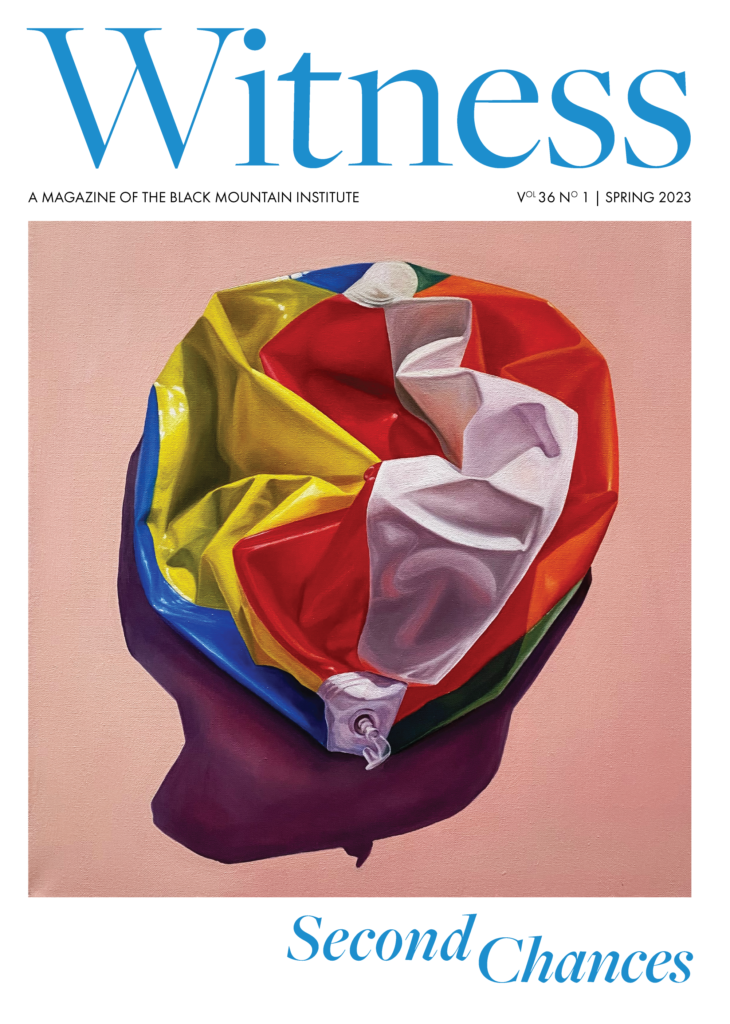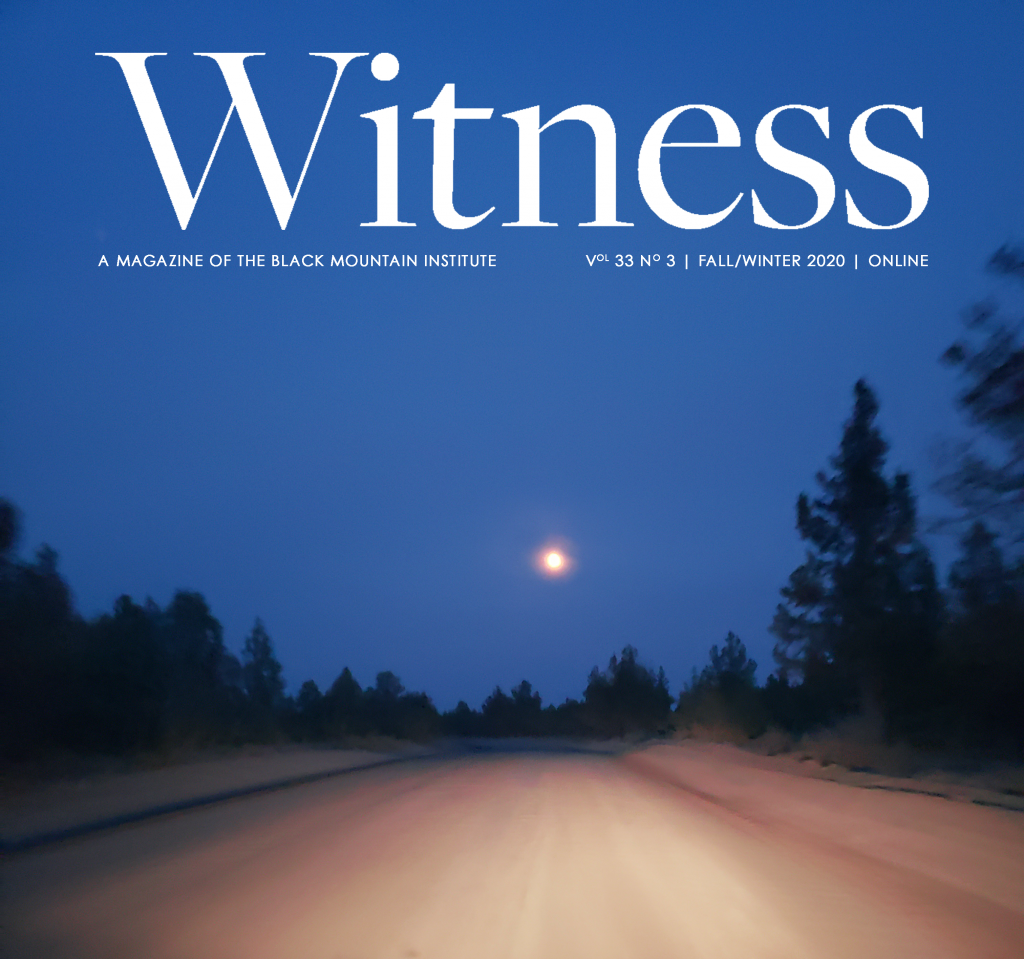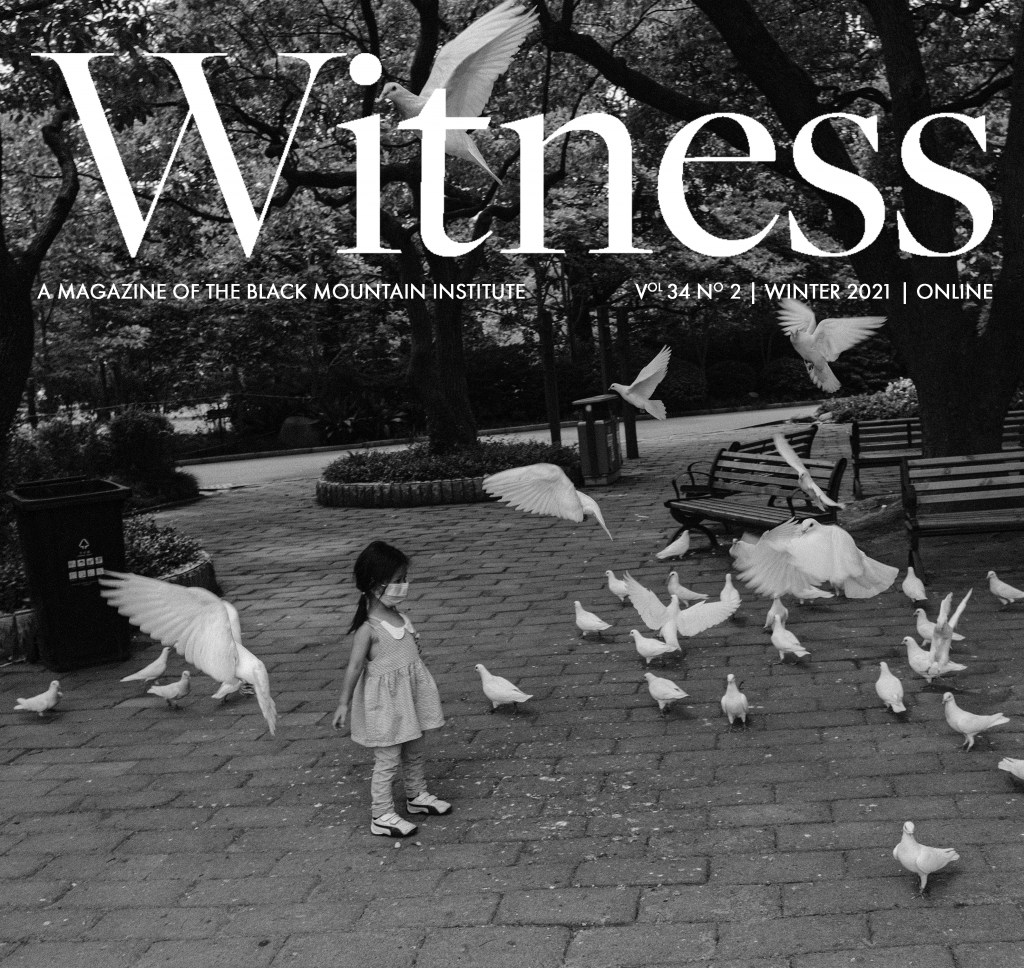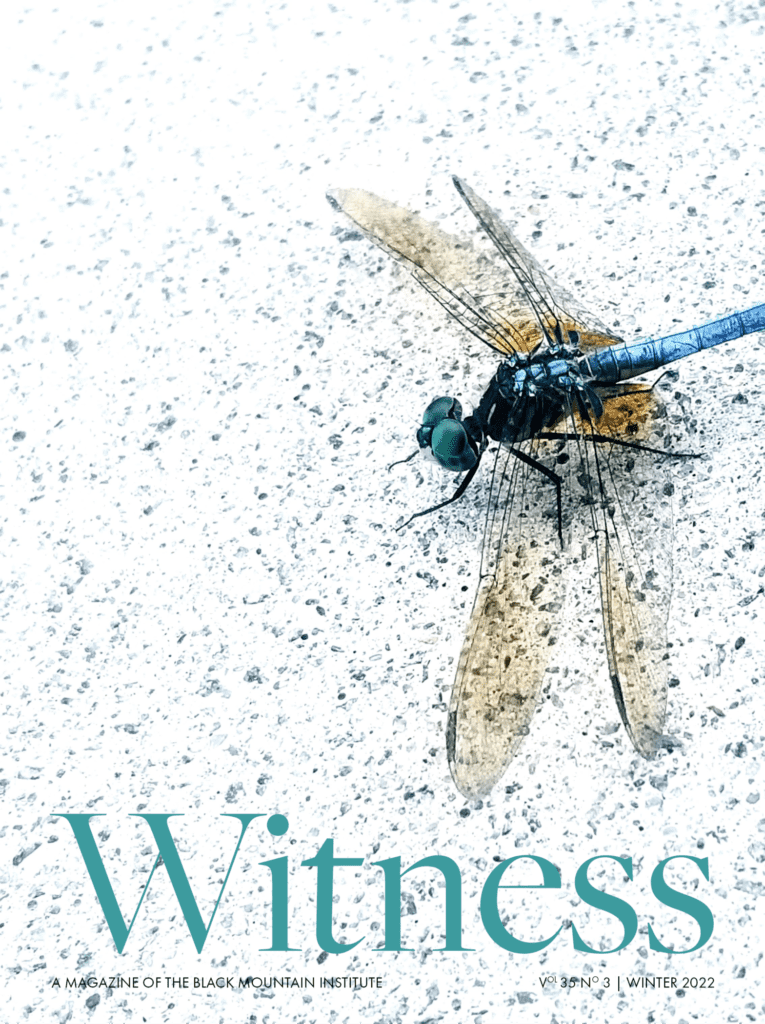mi-grate (v.): to move from one country, place, or locality to another; to pass usually periodically from one region or climate to another for feeding or breeding.
Once, I sat in the back of a room and listened to strangers telling stories about a place that no longer existed. July in Southern California and I’d been sent to cover the party held in honor of the Tortilla Flats mural unveiling, a night of shared memories of a once-community, a former home. A timid reporter, always conscious of co-opting other people’s stories and transposing my own ideas, I hung back in the room, kneeling in a skirt, my legal pad flipped open on my lap while the surviving residents swapped yarns. I scribbled furiously the songs and colors and ingredients they remembered of their lost home.
In the 1930s, Tortilla Flats was a tiny neighborhood tucked between the river and the sea, on the west side of Ventura, a sleepy beach town 50 miles outside of L.A. Tortilla Flats became a catch-all for those too poor to fit into the affluent midtown Ventura neighborhoods: Chumash descendants with no land left to farm, Mexican immigrants growing food for someone else, Chinese immigrants barred from owning land, African-Americans who couldn’t flee from landowners any further west than the Pacific Ocean. Tortilla Flats was the place they built for themselves to belong, sideline communities banding together, and there they raised their children, fished off the pier to supplement their patchwork vegetable gardens, made their own clothes. Rusty tin shacks and wooden lean-tos dotted the shoreline, and in the evenings, families gathered around community bonfires to drink and laugh and sing songs on old guitars. In the midst of a depression, these families accustomed to poverty cultivated a community out of their shared ability to make a life from nearly nothing.
These were the families that had always known how to can their own vegetables and make their own soap, and that homesteader creativity sprung to life in Tortilla Flats, a neighborhood of eccentricities. Bea Wyatt with the painted rock garden and the driveway made of patchwork fabric squares; Buddy Gibson, local band leader and heartthrob; Rainy McDonald, playing the blues on his front porch. They welcomed new Dust Bowl refugees with open arms, and a tent city called Shores Acres sprung up in the middle of Tortilla Flats, with a perfect view of the sunset into the Pacific. The people who were children there told their stories to a room full of former neighbors and me, listening in the back for the choice images that would make a good piece for the paper. They remember childhood as Tortilla Flats, like an island paradise, a small blip of brightly colored happiness in the midst of a difficult decade. They remember the feeling of being home.
Origin of migrate: Latin migratus, past participle of migrare; perhaps akin to Greek ameibein to change.
The forces causing migrations can be placed into two categories: push factors and pull factors.
Humpback whales migrate annually further than any other mammal, more than 15,000 miles each year. They spend the summer feeding in polar waters, circling in packs around the poles, then swim thousands of miles in the winter to tropical waters, where they breed and give birth to the new humpback generations. They begin their journeys each October, as the northern ice pushes southward, encroaching on their feeding range. This is a push factor.
See also: Irish potato famine, Puritan persecution, Dust Bowl “okies”. See also:
revolution.
By late December, the first whales begin to arrive in the warm lagoons of Baja. These first few are usually pregnant mothers, who seek the protective space of the lagoon to give birth. Some others are females, looking for males with which to mate. These are pull factors. The whales are forced to leave a place for one reason, are drawn to a new place for a specific other reason.
See also: California gold rush, Great Migration north. See also: Manifest Destiny.
When I was a child, I thought I would spend my entire life in the same place. I loved New England, with its vibrant autumn leaves and its deep, heavy winter storms. My sisters and I danced like pagans in crisp falling leaves, diving into dank, musty piles and rolling down hills, letting the ground tangle into our hair and our teeth.
Even as a teenager, when I grew restless without malls or movie theatres, without nice restaurants or live music to entertain me, I counted myself lucky to have experienced such stability. I knew people who had moved over and over again as children, who lost friends as soon as they made them, who didn’t have childhood stories embedded in body and home. But my history was written on the walls of my house and carved into the trees that lined my town. These stairs were the same on which I’d dented my head as a toddler. This room was the same in which I’d learned my best friend was dead at age seven. This dining room table is carved and pocked with my algebra homework and the first essay I ever wrote.
per-ma-nent (adj.): lasting or intended to last or remain unchanged indefinitely.
The pattern of permanent migration exists only among humans: the trend of an entire people relocating. Entire cultures have torn up their roots and trekked across open plains, deserts, forests, mountain ranges, throughout the course of human history. Sometimes for food. Sometimes to move with the changing climate, mysterious weather patterns shifting, no longer allowing a civilization to exist where it once had.
Mother and calf humpback whales migrate back north together, and sometimes, a storm comes. But when it does, when the forces of wind form waves like rage across the ocean, the humpback whales must keep swimming. They are more at risk when they remain still, more at risk of drowning, of becoming separated.
Permanent human migration has also occurred as a result of force. Encyclopedias and history books call it “involuntary migration”. See also: slave trade, ethnic cleansing, human trafficking.
See also: Trail of Tears, concentration camps, Khmer Rouge. See also: refugee.
In the 1950s, the city of Ventura paved over Tortilla Flats. This little community, with its kids riding bikes along the shore and its fishing poles and vegetable gardens, lay right in the path of progress. Ventura was to be connected, joined by roadway to the two major trading posts nearby—Los Angeles to the south, Santa Barbara to the north—and the highway overpass would need to run straight through where Tortilla Flats stood. The government offered them a small settlement and forced all the remaining residents to relocate, then brought the big yellow construction equipment to run down the shacks and load out the tin and lay down cement.
What was once Tortilla Flats is now just the parking lot to the Seaside Park, and the thick cement legs that hold up the traffic whirring across the highway. You can drive into the parking lot and hear the shouts of the crowd and see through a thin line of trees behind the stadium to Tony’s Pizza and that’s all that’s left of this place that was once someone’s home.
I’d wandered voluntarily, always outward, always leaving. But I’d left knowing I could go back anytime I wanted. What would it mean, I wondered, to have your home taken instead of choosing to leave?
mi·grant (n.): an animal or person that migrates; (adj.): tending to migrate or having migrated.
A number of categories have been developed for discussing the migrant experience:
Displacement refers both to physical displacement and a sense of being socially or culturally “out of place”.
See also: The Lost Boys of Sudan.
Other migrants write of a location “between” two cultures, a way of expressing a sense of belonging in neither the home nor in the new community.
See also: shantytowns, Johannesburg.
Hybridity is used to describe the migrant’s culturally mixed identity as the opposed forces of assimilation and the search for roots force a middle way.
See also: the Rez.
The Palestinian poet Mahmoud Darwish, living in exile, wrote, “Absent, I come to the home of the absent.”
After college, I went out wandering. I spent my early twenties moving frequently, hopping across the country with stops in Washington, D.C., Montana, California, New York. When I moved to Iowa for graduate school, I had a pretty serious existential crisis: I began to feel ready to settle down in one place, but the Midwest was the last place I ever expected to find myself, a place of wide, flat monoculture fields, of train tracks running out to the coasts. As I settled into the Midwest, I struggled to let go of the expectations, to explore the terrain, to piece together the moments. Home had fallen into my lap, volunteered itself, but it asked something of me in return. I have to tell the story myself.
I’m so afraid I don’t know how to stay, how to make a home.
Mother and baby swim on together through the storm, these two, for each other, the only two in their universe. They must not separate but they cannot rest. So to keep the baby close, to prevent panic, the mother pounds the water with one fin. The repetition of the sounds reminds the child that his mother is just there, just beyond that wave. He stays close to the sound. She swims with one fin.
As the two whales struggle against the fierce current, mother arcs and lifts one fin over her back with an aching slowness, rotating the fin in midair. With great effort, she lets it fall. Flat, smacking against the endless seascape of water surrounding them. A loud thwap. Then she does it again. And she keeps swimming. And she does it again, and again, until the storm passes.
That night at the Tortilla Flats mural unveiling, I listened as the floodgates of memory opened. Still-living residents, those who spent their very youngest years as Tortilla Flats children, rushed up to the microphone to tell old stories about the people and places they all knew. Whenever someone struggled to remember a street name, or the year so-and-so returned from the Marines, someone was there to shout it out. They knew each other’s pasts. They could fill in the blanks of a shared history. I wandered around the Bell Arts Factory and resisted the urge to touch the wooden panels of the mural, to run my fingers along the stylized sepia-toned images of James Dean look-alikes in white t-shirts with cigarettes dangling casually from their lips, or the tumbling dust almost rolling between the trailer parks at Shores Acres. I stared longingly at the blue-gray man crooning into a microphone with a band behind him, girls in poodle skirts swooning up at him, painfully aware that this was not my past. These were someone else’s stories.
Origin of permanent: 1400–50; late Middle English < Latin permanent- (stem of permanēns), present participle of permanēre to remain.
Literary theorist Graeme Dunphy has distinguished between emigrant and immigrant perspectives in migrant literature. The emigrant perspective focuses backwards (backwards?) to the country of origin.
See also: Katrina refugees.
The immigrant perspective suggests that the migrant is reconciled with the prospect of permanent residence in the country of arrival.
See also: the Mayflower. See also: Declaration of Independence.
What I learned at the Tortilla Flats reunion party was that a physical location is not the only mortar that binds a community; in the midst of destruction, they clung to a shared history.
Generations later, most of the Flats children still live in Ventura, still know each other, still get together to drink at Nicholby’s on the occasional Friday night. They found a way to preserve what had been taken from them, and out of that shared sense of community grew the Tortilla Flats mural project. A couple of local artists who knew some of the old Ventura families decided to memorialize this neighborhood and its story of survival in a public art project, eventually funded by the city, to be installed beneath the highway overpass, where Tortilla Flats once stood. They made connections and knocked on doors and started interviews; they gathered photographs and even had weekend-long painting sessions to which anyone was welcome.
The finished mural is a mosaic of stories from California past. Some are renderings of photos the artists were given, some are interpretations of stories they heard, some panels are tiled tributes in which they embedded original photographs of dead residents. The names, the images, the histories of the place woven into a massive artistic imagining. A home remade out of memory.
im·mi·grant (n.): a person who migrates to another country, usually for permanent residence.
Some refer to a migrant in a new place as a “guest” in a “host” community, implying they are either parasites or welcome friends at a dinner party. After fleeing political persecution in the 1950s, the Dalai Lama established the Tibetan government-in-exile. They have a homeland they cannot occupy, a government for a country that exists only in theory. They are guests in India’s host community.
em·i·grant (n.): a person who emigrates, as from his or her native country or region: They welcomed the emigrants from Italy.
In most species of small birds, migration routes are genetically programmed. The birds are born knowing where and when to fly. But sometimes this programming goes wrong, and the young bird, in its first autumn, migrates on a route one hundred eighty degrees from the correct route.
Most of these lost young birds die, having flown to where the weather is too cold, or there is not enough food. But there is some evidence that a few survive, sometimes even returning to the same area the next winter. They have three choices: die, reorient, or establish a home wherever they ended up.
I had a dream last year that I had to build a house out of memories. I stood by a storage bin and pulled out objects, then told the stories that brought those moments to life: this was the pink dress she wore to the prom, these were the pearls she inherited from her grandmother, this is the chair he sat in when he learned his father was dead. As I told the stories, pieces of the house grew up around my feet, bricks laying themselves into a small Tudor sitting in a nameless meadow, timezone indiscernible. And when, in the dream, I’d spoken every story, laid every brick, when the home was built, I said a home is nothing more than the memories of the people who have lived there. I wrote it down when I woke up and tried for weeks to construct a story from that line.
The Fourteenth Dalai Lama lives in exile in India. The Dalai Lama is not, in fact, a person, but a spirit, a continual reincarnation, manifested in generations of bodies. China believes it has the authority to appoint the next Dalai Lama, and, knowing the government would use this as a tactic to dismantle the Tibetan government in exile, the current Dalai Lama recently announced his intention to be reincarnated from within the Tibetan home in India. Born again in the home that only survives within the spirit.
See also: all of us, every one.
ex·ile (n.): expulsion from one’s native land by authoritative decree; the fact or state of such expulsion; anyone separated from his or her country or home voluntarily or by force of circumstances.
Mahmoud Darwish died in exile in 2008. He wrote:
I come from There and remember…
I have learned and dismantled all the words
to construct a single one: Home
home (n.): the place in which one’s domestic affections are centered; the dwelling place or retreat of an animal; the place or region where something is native or most common.
After the Tortilla Flats party wound down, I tossed my notes in the passenger seat and drove down Figueroa Street to see the smooth cement wall where the mural would later be installed. I stood against my car beneath the overpass, listening to the rushing of cars overhead and thinking about the home that once existed here. How they had managed to make it live again, how they had built a memory house they could no longer live in. And standing there, with the cool breeze coming off the ocean, I could almost hear Johnny Barrio’s uncles, as he told of them, driving their big old car with the top down, swigging from a jug of wine, feet up on the dash, singing old Mexican songs.
home (adv.): to, toward, or at home; deep, to the heart.
Humpback whales will always live among the waves. They must learn to live with the rhythm of the sea, and with her storms. And so the mother beats her fin against the current. Because most of all, it reassures the baby, the pulse of her fin a reminder of the familiar closeness of his mother’s heartbeat.
Origin of home: before 900; Middle English hom, Old English hām (n and adv.); cognate with Dutch heim, Old Norse heimr, Danish hjem, Swedish hem, German Heim, Gothic haims village; akin to haunt.







